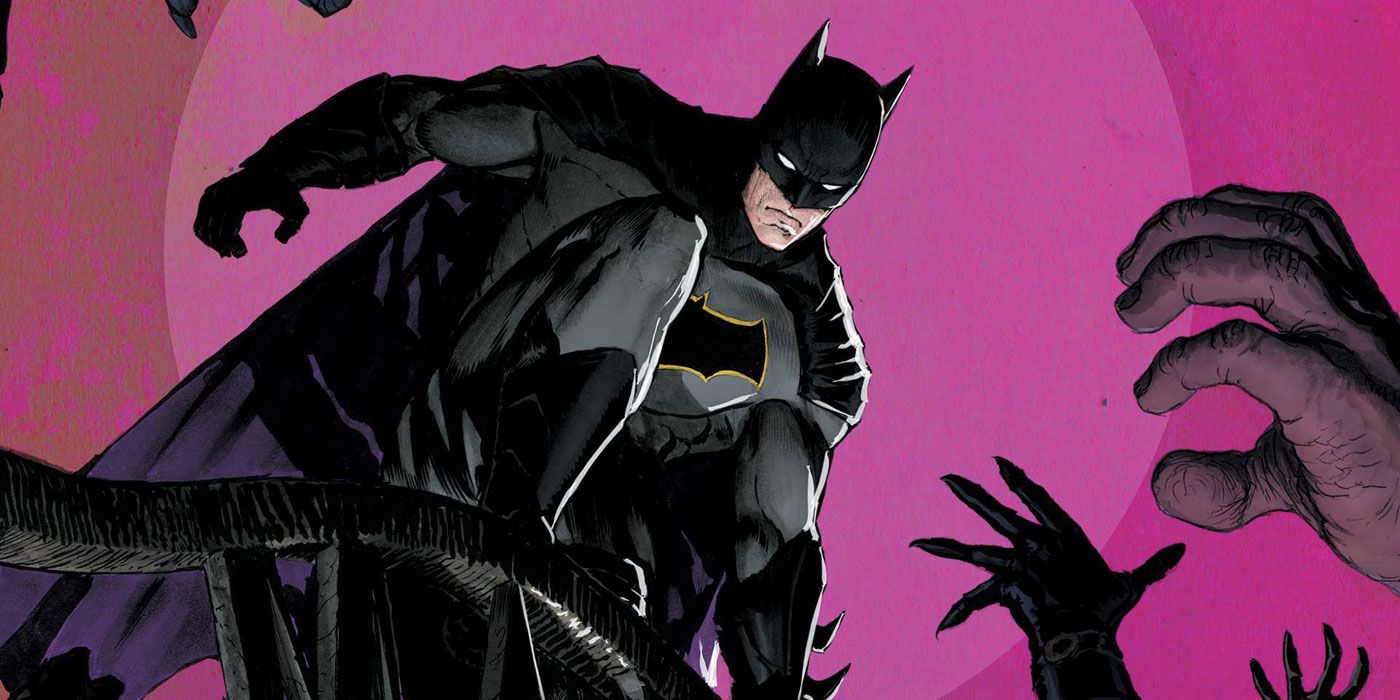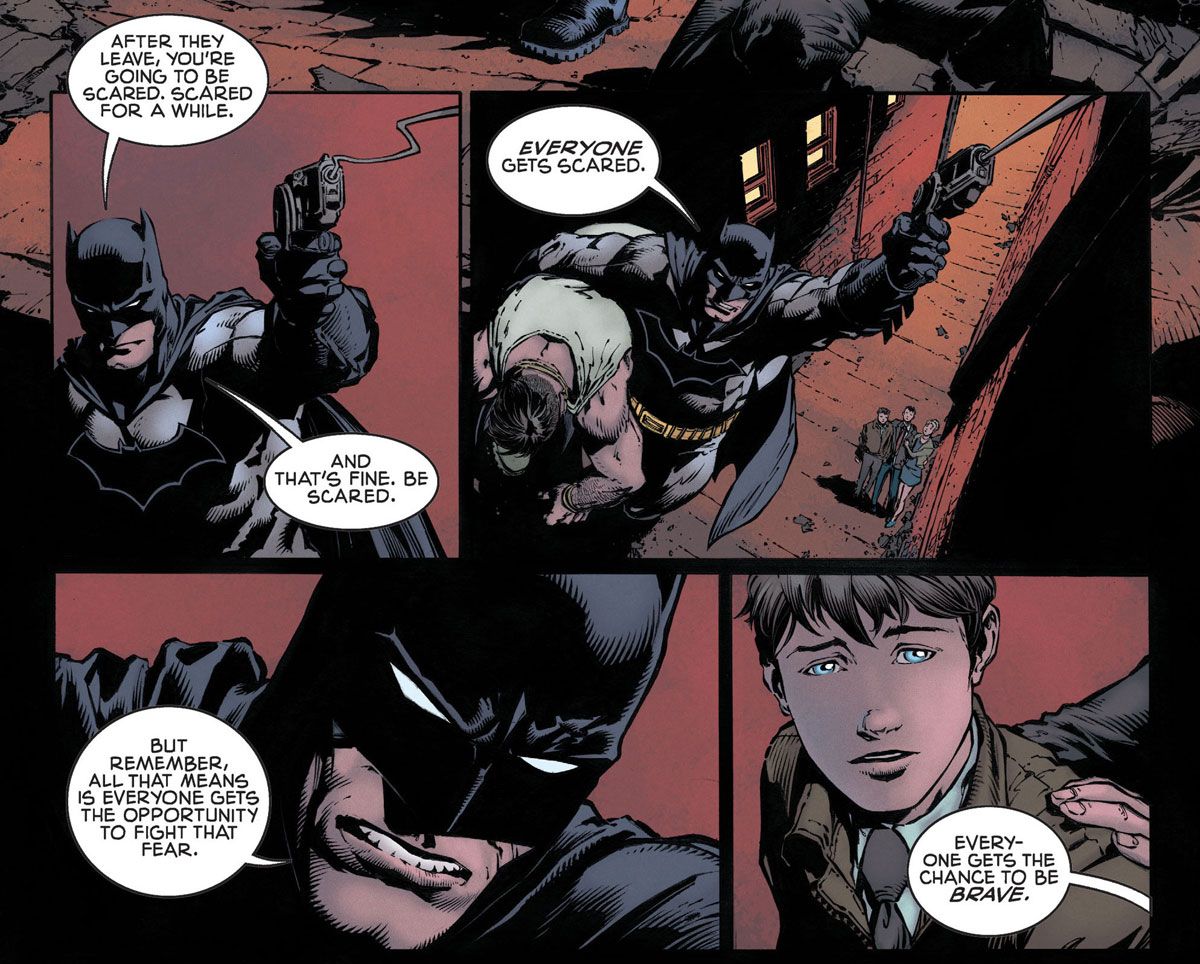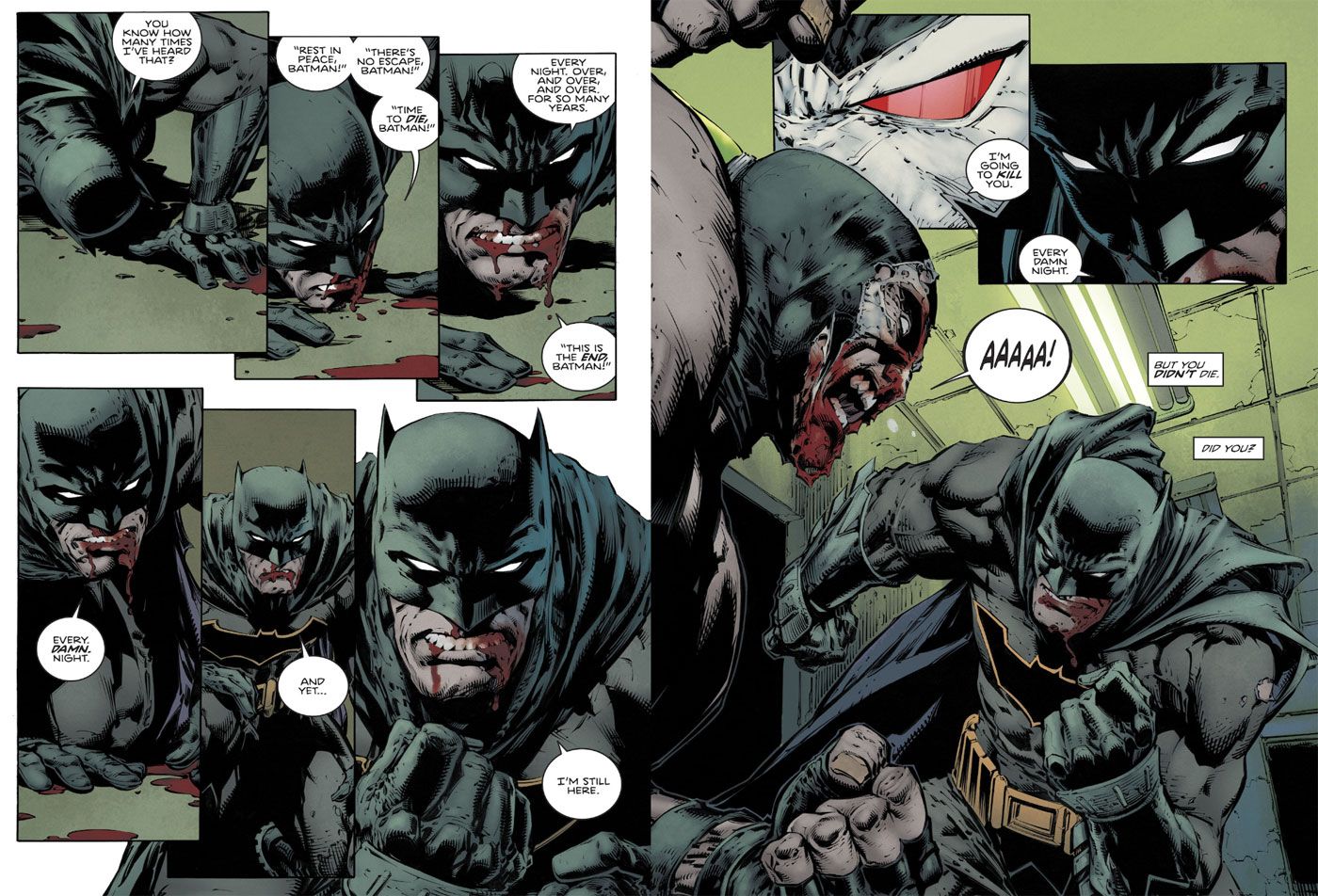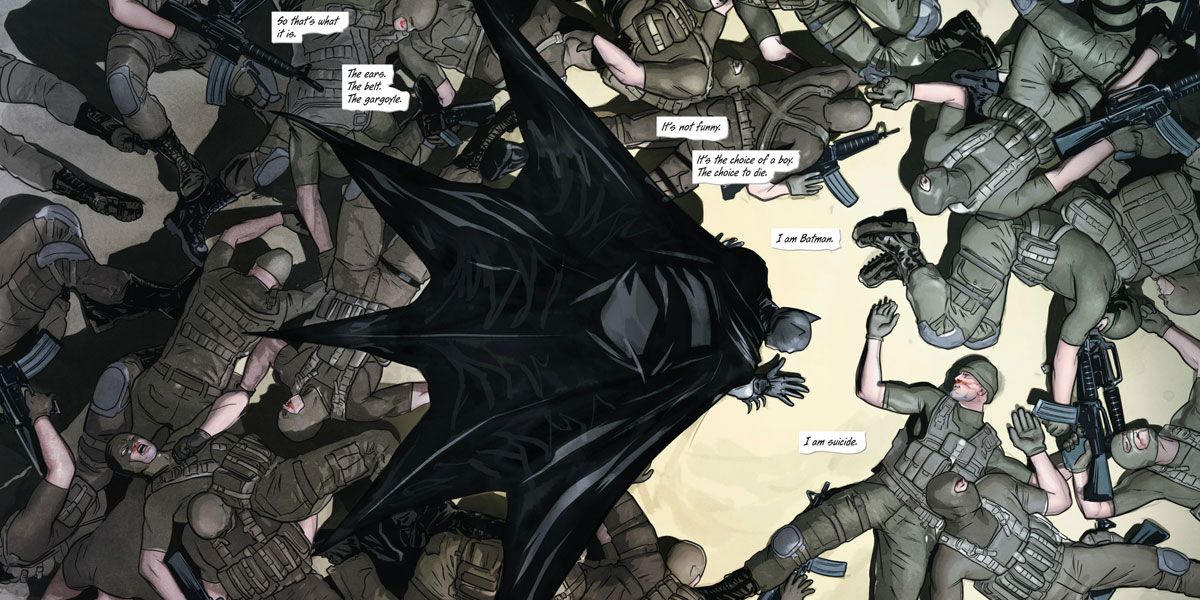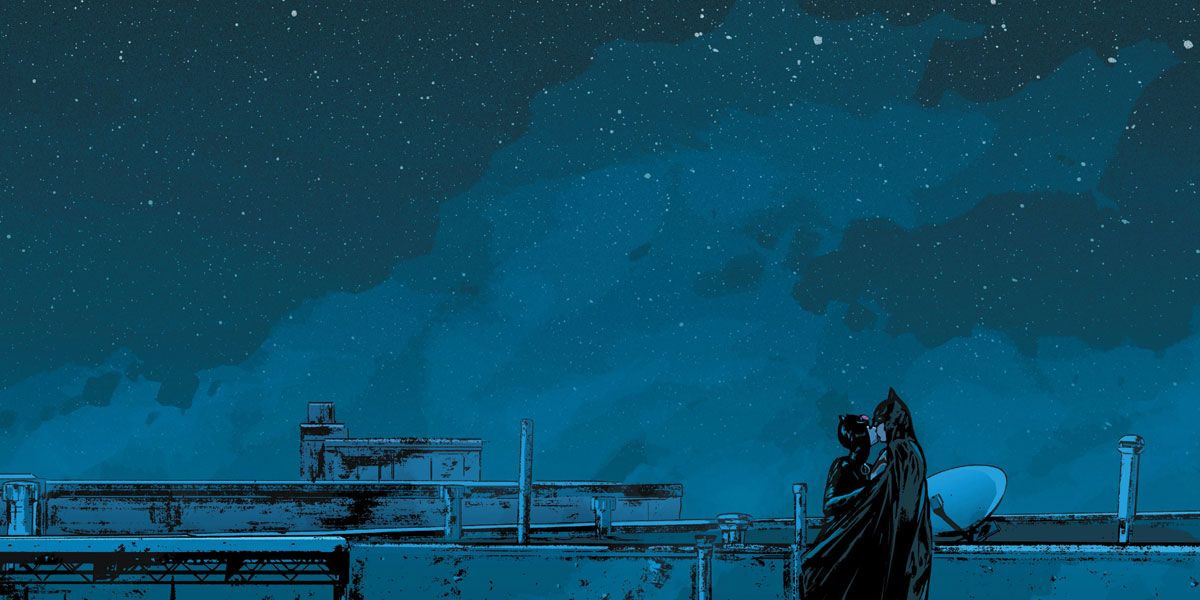In the span of just two years, Tom King has established himself as one of the must-read writers in modern comics. That he somehow missed out on a 2017 Eisner Award nomination for his work on The Vision, The Omega Men and The Sheriff of Babylon is a mystery, and when it was announced he would succeed Scott Snyder as the writer of Batman for DC Comics' Rebirth initiative, how could you not have been excited? Over the course of 25 issues, with a rotating art team of David Finch, Mikel Janin and Mitch Gerads providing some of the best work of their careers, the first year of Rebirth’s Batman has been one of the most consistently great books on the stands.
RELATED: Batman: War of Jokes and Riddles’ Inciting Incident Revealed
I was worried King might be constrained by Batman’s standing as a flagship character, that he wouldn’t be allowed to shake up the character as much as he had with Vision or Kyle Rayner in The Omega Men. It was an unnecessary fear, however, as the amazing character nuance and emotional depth of King's previous series are on display here.
With his first year with the Dark Knight completed, we're taking a look at what exactly King, Finch & Co. have been trying to say with the character. They’ve spent 24-issues dissecting Bruce Wayne; so it's only fair we take a closer look at their examination in return. Just who is Batman, and what does he stand for? Is there a man under the mask, or is there just the Bat?
KEEP GOTHAM WEIRD
One the best aspects of this run is how much the creative team embraces the inherent goofiness and weirdness of the character. They paint with a wider brush of emotions, instead of using just the grimmer and darker tones that are part and parcel of Gotham City. This isn’t Unbeatable Squirrel Girl, of course; there are limits to how funny certain characters and their books can be. But sometimes you need some levity, and King isn’t afraid to embrace Batman’s more humorous elements.
We have Alfred dressed as Batman attempting to distract Gotham, a character with Superman-level powers. The Dark Knight goes full Inigo Montoya when raiding Bane’s island. The Ventriloquist is used as a great Chekhov’s gun. I never knew I needed to read a comic in which Batman and Swamp Thing team up to solve a murder until I read Batman #23, where the duo finds the assailant they're hunting... because the grass at the Gotham Museum of Art tips off Swamp Thing.
There's an issue in which Bruce warns Dick, Jason, Damian and Duke to stay away from Gotham because Bane will kill them, all while they bicker like brothers in a Batman-themed fast food restaurant called Batburger. It’s now canon that Bruce Wayne eats hamburgers with a knife and a fork.
RELATED: DC Unleashes Evil Versions of Batman in Dark Nights: Metal One-Shots
Even "The Button" – a crossover I do have some problems with – contains this kind of offbeat weirdness. Batman grappling himself to the Flash’s cosmic treadmill and hanging from it like a water-skier is so goofy, and yet it works in that special way that only comics can pull off.
King also pulls out some of the stranger deep-cuts from the Dark Knight’s rogue gallery, including Colonel Blimp, Amygdala and the series’ true MVP, Kite Man, who's used as a running gag that gets funnier each time he shows up, demonstrating how committed King is to maintaining that thread of levity.
RELATED: REVIEW: Batman #21 Builds Rebirth, Pays Terrific Homage To Watchmen
THE CHANCE TO BE BRAVE
There’s a flashback that opens Issue #3, in which Batman saves a young Gotham and his parents from the same fate as Thomas and Martha Wayne. Leaping into the night, the Dark Knight tells the future hero, “Everyone gets scared. But remember, all that means is everyone gets the opportunity to fight that fear. Everyone gets that chance to be brave.”
Gotham falls because he’s unable to fight that fear. He wants to be brave, but he can’t; his namesake city is just too much for him. No matter how much good he tries to do, the city throws it back in his face. Even with Kryptonian-level powers, he’s scared of failing, of not being strong enough. The city grinds Gotham down, and he gives into his fear and it transforms into a blind, unrelenting anger.
RELATED: How Gotham Girl (And Tom King) Saved Batman
King and Finch revisit this idea in Batman #18, drawing a parallel between Bruce Wayne and Bane as children. They’re two young boys who have both lost their parents, left broken and scared. Where they differ is how they chose to channel their respective fear. Bruce chooses to be brave and sets out to create a world where no child has to watch his parents be murdered in cold blood. Bane chooses are darker route – he wants to conquer all criminals. They both want to bring order to a chaotic world, but one wants peace while the other wants ultimate power.
Batman is able to overcome that fear. Bane can’t. The only way he can feel brave is by having the Pirate manipulate his emotions. He’s no longer addicted to Venom, but he is addicted to the Pirate projecting emotions into him.
“SO I HELPED HER.”
Tom King and David Finch open their run with a massive action sequence that finds Batman guiding a crashing passenger jet through the skies of Gotham City, fully accepting that saving these people means he has to die. Just before the jetliner hits Gotham’s bay, he asks Alfred if his parents would’ve been proud of him, whether his imminent demise is a “good death.” A mournful Alfred tells him that, yes, his parents would be proud, and that this was a good death. That Batman is subsequently saved by the debuting Gotham and Gotham Girl does nothing to undercut that moment - Batman was sacrificing himself, selflessly, in order to save thousands of lives -- a "good death," indeed.
King revisits this concept of a “good death” in the final moments of Batman #20, where it’s revealed that a bloodied and beaten Bruce has been speaking with his mother. On the edge of life and death, Martha calls her son to the afterlife. By helping Gotham Girl, he has finally achieved a victory because she’s the key to saving Gotham City. And now that Batman has achieved victory, he’s finally earned his death. It’s in that moment that Bruce realizes it’s never been about whether or not he’s earned a “good death.”
RELATED: Tom King’s Impact on Batman Is Defined As A Turning Point Looms
Batman helps people; whether it’s one person or an entire city. He’s a superhero -- that’s what he does. He exists to help us overcome that fear and become brave. It doesn’t matter if he goes down with the plane, has his back broken, or is almost beaten to death by the one villain to ever break him. He’ll get up and keep fighting the good fight if it means saving a single person’s life. At his core, that’s what Batman is about: overcoming trauma and coming out the other side, stronger. No matter what happens, he’ll be out there making the world a better place. In a sense, Gotham Girl is irrelevant, because if not her he’d be off helping someone else.
The idea of a “good death” doesn’t matter, because Batman’s death is unimportant. What matters is everything leading up to it – whether it’s saving a jetliner full of passengers or one scared person. Death isn’t karma; you don’t sacrifice your life because you earned a “good death”, you sacrifice your life because it’s your responsibility to make the world a better place.
“The girl needed help. So I helped her,” Bruce explains to his mother. “That’s all it is. That’s all it’s ever been.”
THE MAN UNDER THE MASK
Catwoman asks Batman to let her spend one last night with him before she’s sent to Blackgate Prison to serve a life sentence; she then spends most of the evening tagging along as the Dark Knight takes down various C-list members of his rogue gallery. Despite this being the last chance to share an intimate evening with one of the few people on the planet that actually understands him, Batman can’t stop being Batman. No matter how much he does, he’s never finished.
This leads to King closing out his first year with the Dark Knight asking an important question: Can Batman be happy? During “The Button” arc, the Flashpoint timeline’s version of Thomas Wayne urges his son to hang up the cowl and finally find happiness. “Don’t be Batman.”
During the “I Am Suicide” arc, we learn that Bruce Wayne slashed his wrists as a child. It’s an act of self-sacrifice as much as a cry for help; that’s the moment “Bruce Wayne” died, and Batman is born. It’s an act of selflessness, with Bruce giving up everything that makes him “normal” to become an unstoppable force of justice. But if Bruce Wayne is dead, does that mean Batman can’t stop being Batman? If the person under the mask is “dead”, then what happens when he stops being Batman and takes it off?
RELATED: Batman’s Tom King Ranks the Batfamily by Combat Prowess
Compared to the previous takes on the character, King’s Batman is the most human, the most vulnerable. Grant Morrison’s Batman was more or less a God, who was two steps ahead of literally everyone. Scott Snyder and Greg Capullo ended their run with an amnesiac Bruce sacrificing his humanity to become Batman again, because only he’s capable of carry the burden of the cape and cowl. With King’s take on the character, it actually feels like there’s a man under the mask, a being of flesh and blood and full of insecurities.
For all his talk of overcoming your fear and being brave, Batman is still scared. In Batman #24, Gotham Girl and Batman discuss the concept of happiness, something that eludes the Dark Knight. He fights crime in an attempt to be happy, and no matter how much he tries he ultimately fails because he’s scared.
That’s why the Bat proposing to the Cat is significant, because he’s trying to overcome that fear. He finally wants to be happy. So the question is now: Can Batman actually be happy, and what will it take to achieve it?
BATMAN BEYOND
King could’ve ended his tenure with Batman #24, and this run would be chalked up as another amazing limited series under his belt. Finch, Janin and Gerads were firing on all cylinders throughout their respective arcs, their rotating art duties a good example of how to overcome the uneven art that can come from shipping a series twice a month.
That's not what's happening, however; Janin and colorist June Chung have re-joined King for the upcoming “The War of Jokes and Riddle” arc, which is set just after "Zero Year" and sees the Joker and the Riddler facing off against one-another and tearing up Gotham in the process. It'll be fascinating to see how King’s sense of humor translates to a villain whose entire shtick is being the funniest man in the room, and how his intricate plotting pays off for a villain whose entire shtick is being the smartest man in the room. If it’s anything like the rest of this run, it’s going to be a good one.

